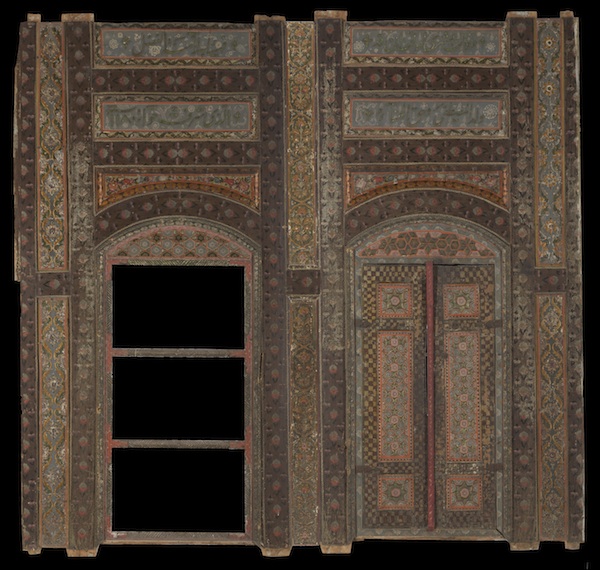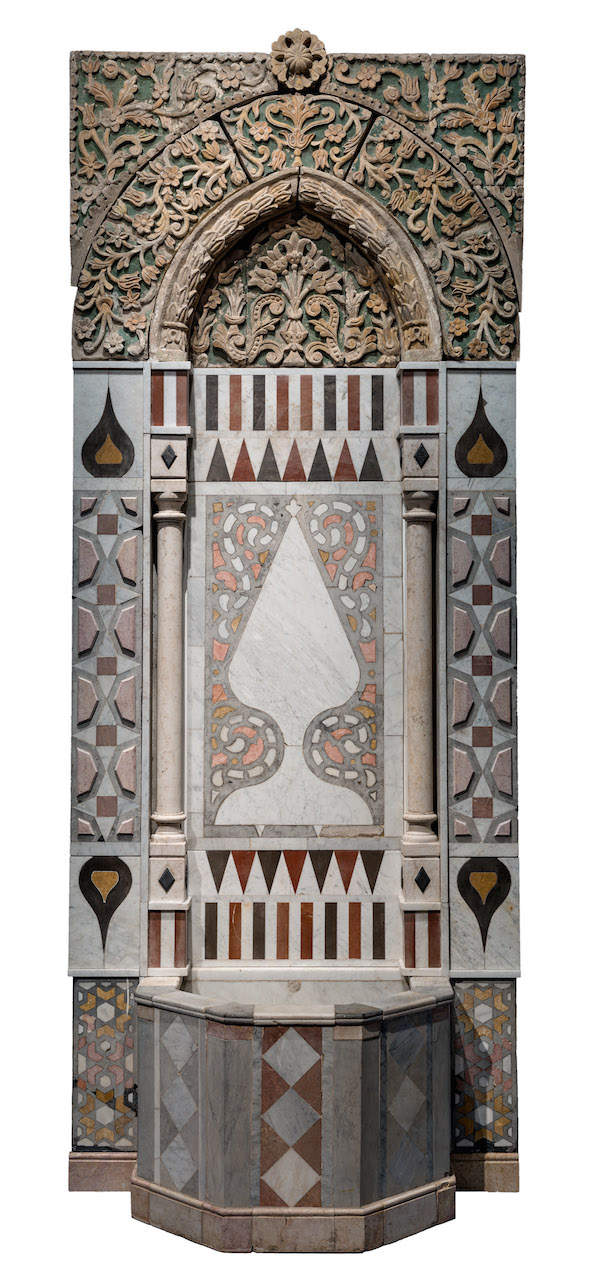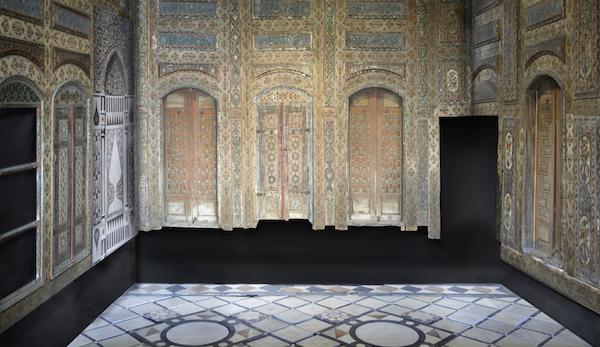A little over two years ago, I wrote a piece focusing on the proposed acquisition of an important work of art—a largely complete 18th-century interior from Damascus. Such lavishly decorated rooms opened out to ornate stone courtyards in the city’s well-to-do homes. At the time I noted that this possible purchase had come to signify more than the unique opportunity to acquire a rare period room that would become a destination for museum visitors but was also the very embodiment of what LACMA is as an encyclopedic art museum. Given the then ongoing (and continuing) civil war in Syria, we would be helping to preserve a small part of the cultural history of one of the world’s oldest, continuously occupied cities.

Last spring LACMA finalized the acquisition of this remarkable Damascus room. Dated 1766–67 and measuring 15’ x 20’, it served as a reception room where the head of the family entertained honored guests. With the modernization and growth of Damascus, many historic homes were demolished but occasionally their sumptuous interiors were spared, as was the case with our room. It was dismantled intact from a courtyard home in the al-Bahsa quarter of Damascus, which was torn down in 1978 to make way for a road; soon after the room was exported from Syria to Beirut, Lebanon, where it remained for over 30 years. As is typical, it has multicolored inlaid stone floors, painted wood walls, elaborate cupboard doors and storage niches, a spectacular arch with plaster voussoirs decorated with colored inlays that served to divide the room into upper and lower sections separated by a single tall step; and an intricately inlaid stone wall fountain with a carved and painted hood. Perhaps because the room remained in storage for so many years and had never been reinstalled or restored, it is largely in its original, though aged, state, with one of the best-preserved painted surfaces—including bright pinks, oranges, blues, and greens—of any similar room of the period. The decoration, mainly floral, incorporates on the cornices detailed depictions of platters of fruit, nuts, and even baklava, which must have served to whet the appetites of visitors to the room as they awaited the same types of refreshment.

Thanks to a special partnership with Saudi Aramco’s King Abdulaziz Center for World Culture, with additional support provided by the Friends of Heritage Preservation, LACMA has already begun the lengthy process of conserving and restoring the room. Its stone and plaster surfaces require cleaning, while the painted wood panels that make up the bulk of the room need to be cleaned, consolidated, stabilized, and repaired, all of which is now in process. The painted wood surfaces are embellished with a particular type of relief decoration known in Arabic as al-‘ajami ("meaning non-Arab or foreign") or as pastiglia in the West. This technique produces raised designs of gypsum (mixed with glue), which are then covered with metal leaf, colored glazes, and matte paint. Because the LACMA room’s ‘ajami decoration is so well preserved, our planned analysis of the metals, glazes, and pigments should provide key data for the study, restoration, and preservation of other such rooms. As a final step, we will recreate the low velvet-covered couches and cushions that provided seating in the upper section of the interior. Following its restoration, the room will be reconstructed on a specially designed and fabricated armature, which will not only support the walls and floors but will allow the room to be assembled and disassembled so that it can be installed in any appropriate size museum space. In fact, the LACMA Damascus room will travel to Dhahran, Saudi Arabia, where it will premiere in March 2016, at the King Abdulaziz Center for World Culture to celebrate the inauguration of its new building. Two years later, our 18th-century period room will return to Los Angeles so that its story can be told and appreciated in this 21st-century city.
The conservation of the Damascus room is organized in partnership with the King Abdulaziz Center for World Culture, a Saudi Aramco initiative; the room will be part of the opening exhibitions in the Center’s launch in 2016. Additional conservation support was provided by the Friends of Heritage Preservation.
Read the full press release here.



